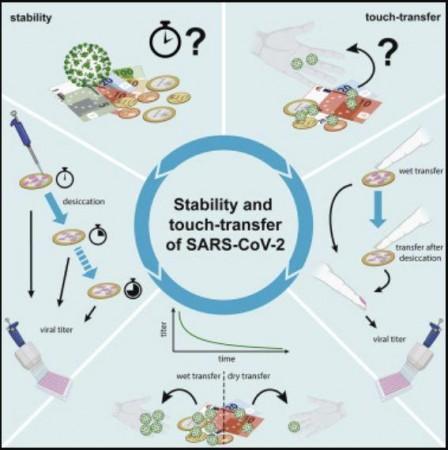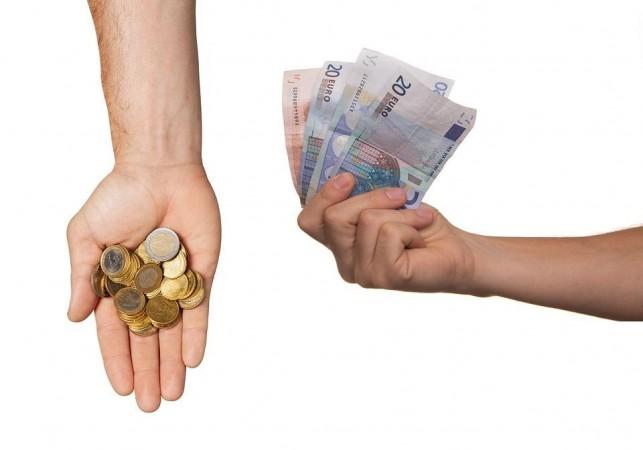Over the course of the COVID-19 pandemic, there has been an aggressive adaption of contactless payment methods driven by the fear of the SARS-CoV-2 virus. Certain businesses and individuals, however, continue to rely on the direct exchange of cash. This is either due to a lack of access to devices and bank accounts or resistance to technology. Therefore, the handling of notes and coins continues to serve as a source of worry for some. Now, a new study has found that there is a very low risk of transmission through contaminated banknotes and coins.
Using a realistic transfer model, the multi-institutional research demonstrated that despite currencies being tainted with the coronavirus, the chances of contracting the viral infection from them were very low. According to the researchers, findings using the Alpha variant—a variant of concern (VOC) that has become a dominant strain in several countries—were consistent with those acquired using the original virus.
"Overall, our results point to a low risk of SARS-CoV-2 transmission by coins and banknotes and the tendency to prefer contactless payment over cash during the pandemic seems unnecessary," wrote the authors. The study was published in the journal iScience.
Coins and Banknotes as Fomites

The ability of fomites—materials or objects or surfaces that can harbor pathogens—in the spread of the virus had been a widely debated subject. Many studies have found that the SARS-CoV-2 can survive on different materials for extended periods of time; from days to weeks. Nevertheless, a consensus on the capacity of fomites in transmitting the disease has been evasive.
In order to ascertain the duration for which the SARS-CoV-2 virus survives on banknotes and coins, the authors treated different euro coins and banknotes with viral solutions. The concentrations of these solutions were varied and the currencies were observed for several days to determine how long the coronavirus remained detectable. In each of these cases, a stainless-steel surface was used as a control.
Very Low Risk of Transmission
The findings were encouraging. Though the pathogen was endured on the stainless-steel surface even after seven days, it required only three days for it to dissipate completely from the 10-euro banknote. In the case of 5-cent, 1-euro, and 10-cent, no virus was discernible after one hour, two days, and six days respectively.
"The rapid decline on the 5-cent piece is because it's made of copper, on which viruses are known to be less stable," stated Dr. Daniel Todt, lead author of the study in a statement.

Next, the team developed and used a realistic transfer method to evaluate how effectively SARS-CoV-2 is transmitted to fingertips from a surface. A harmless coronavirus—BcoV—was used to contaminate coins, banknotes, and PVC plates that served as substitutes for credit cards. Employing strict safety measures, SARS-CoV-2 was also used. Following this, test subjects touched the contaminated surfaces while they were still wet with the viral solution or after it had dried. Artificial skin was used in the case of novel coronavirus.
The researchers then inoculated cell cultures from the viruses that had stuck to the fingertips. This enables them to identify the quantity of transmitted virus particles that continued to remain pathogenic. "We saw that immediately after the liquid had dried, there was practically no transmission of infectious virus. Under realistic conditions, infection with SARS-Cov-2 from cash is very unlikely," noted Dr. Todt.
Comparable with Variant of Concern

According to the authors, the findings are consistent with those of other studies, which assert that most of the infections result from aerosols or droplets that enter the mouth or nose, either directly or through viral particles present on unsanitized hands. The team emphasized that "Our results indicate that transmission of SARS-CoV-2 via contaminated coins and banknotes is unlikely and requires high viral loads and a timely order of specific events," the authors wrote.
Importantly, in addition to the wild-type virus, the Alpha variant was also used in the experiments. It was found that results with the VOC were comparable to that of the original strain. "We assume that other variants, such as the currently predominant delta variant, also behave similarly," concluded Dr. Eike Steinmann, corresponding author of the study.

















